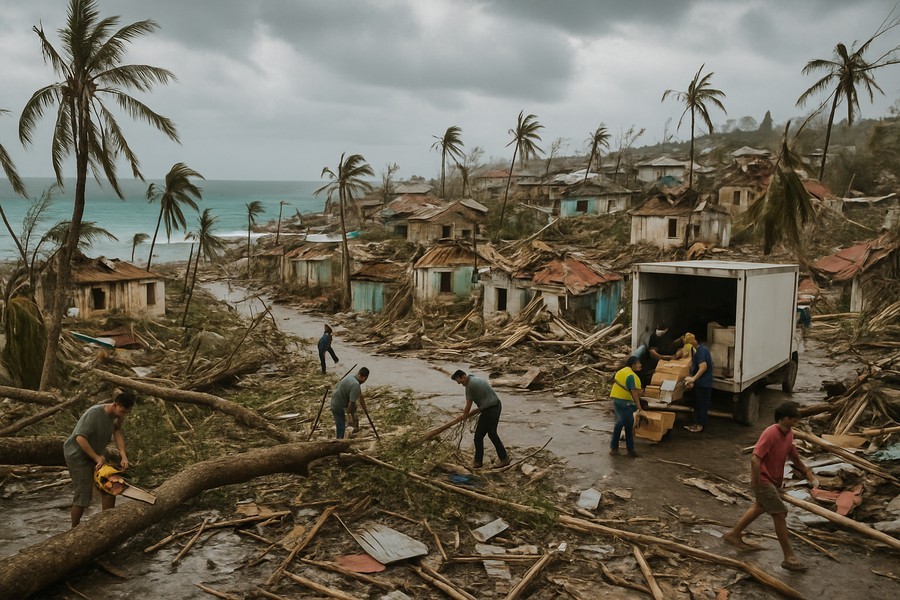
Devastation in the Wake of a Powerful Hurricane
The aftermath of a particularly intense hurricane is being felt across northern parts of the Caribbean. This fierce storm, which claimed several lives, has moved over the Bahamas and is now heading towards Bermuda. The destruction left in its wake is being slowly uncovered as people begin to pick up the pieces.
Rebuilding Begins in Jamaica
The noises of chainsaws, heavy machinery, and machetes resonate across southeast Jamaica as government workers and locals start to clear roads. They are working to reach communities that were directly impacted by one of the most potent Atlantic storms in recorded history.
Residents are in shock as they survey the damage to their homes and belongings. Many of their homes have lost roofs and possessions are scattered and soaked from the storm. Relief efforts have commenced with planes bringing in water, food, and essential supplies. The country's Transportation Minister described the devastation as "enormous".
Many Jamaicans now face an uncertain future. "I am now homeless, but I have to be hopeful because I have life," said one resident, Sheryl Smith, who lost the roof of her home. Sadly, at least four fatalities have been reported in southwest Jamaica. The Prime Minister revealed that up to 90% of roofs in the coastal community of Black River were destroyed. "Black River is what you would describe as ground zero," he said. "The people are still coming to grips with the destruction."
Over 25,000 people are currently residing in shelters across the western half of Jamaica, and power outages affect 77% of the island.
Haiti Suffers Heavy Damage
The hurricane also caused catastrophic flooding in Haiti, resulting in at least 23 deaths and several missing individuals, mostly in the country's southern region. The Civil Protection Agency reported that the hurricane claimed at least 20 lives in Petit-Goâve, including 10 children. More than 160 homes were damaged, with 80 being completely destroyed.
Over 11,600 people are currently housed in shelters due to the storm, and 152 disabled individuals in the southern region require emergency food assistance.
Cuba Begins Clean-Up
People in Cuba have started to clear blocked roads and highways using heavy machinery. The military has also been aiding in rescuing people trapped in isolated communities and those at risk from landslides.
Despite the massive evacuation of over 735,000 people across eastern Cuba, no fatalities were reported. Residents are now slowly returning home. "We are cleaning the streets, clearing the way," said Yaima Almenares, a resident of Santiago city.
In rural areas outside Santiago de Cuba city, residents returned to their homes to find water damage. They had lifted furniture and other items off the ground in preparation for the storm. Many communities are still without electricity, internet, and phone services due to damaged transformers and power lines.
Losses include roofs, power lines, telecommunications cables, and roads. Isolated communities and damage to banana, cassava, and coffee plantations were also reported. On a positive note, the rain was beneficial for reservoirs and helped alleviate a severe drought in eastern Cuba.
The hurricane made landfall in Jamaica as a Category 5 storm, with winds reaching speeds up to 185 mph. It held its strength as a Category 3 storm when it made landfall in eastern Cuba.
The Storm Continues
Bermuda is now on high alert as the powerful hurricane heads its way. The storm, now a Category 2, with winds up to 105 mph, has already brought heavy rains and gusty winds to the central and southeastern Bahamas.
According to officials, "The hurricane is expected to pass to the northwest of Bermuda later today and tonight ... Slight strengthening is possible today before weakening likely begins on Friday. Tropical storm conditions will begin on Bermuda later today, with hurricane conditions expected there tonight."
